The French seaside resort sacrificed to keep D-Day secret
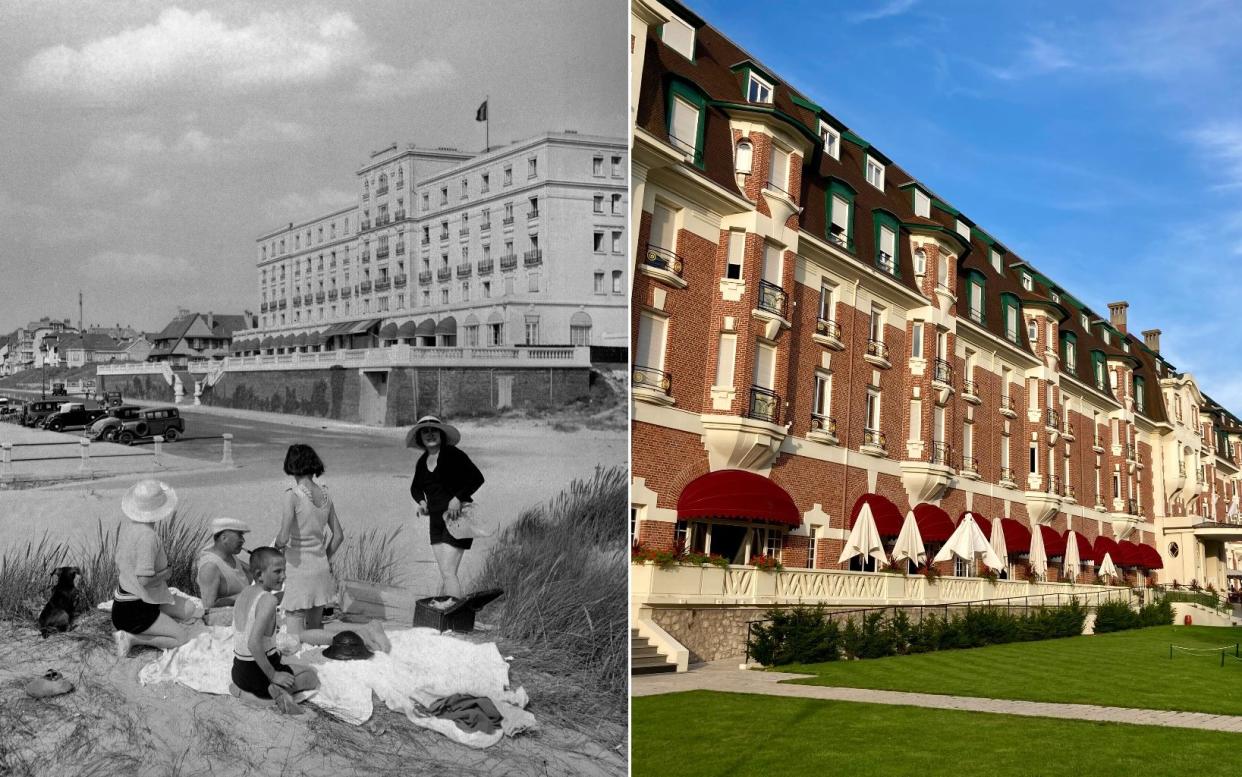
Then and now: Le Touquet was a popular tourist resort until it was bombed in 1944. It has since returned to its previous model as a wealthy seaside town
It is a warm afternoon on the Opal Coast of northern France. At the headland where Le Touquet runs out of space on the estuary of the River Canche, there is a burble of insects in the undergrowth, and an excited chatter of children on the sandy path which separates the shoreline dunes from the thick foliage of the Parc de l’Estuaire. The scene is not quite one of silence, certainly. But there is something golden about it – a seaside resort at play.
And then, at a stroke, the calm is shattered – by the approach of two Allied aircraft. A Spitfire and Mustang are coming in low, close together, entwined in a dance. The roar of their engines is so loud that, as they pass overhead, I am sure I see the German bunkers, buried in the long grass, begin to twitch in a phantom muscle-memory response. And then they are gone, these birds of war, their mechanical din fading as they touch down at the small airport that waits off to the east – just beyond the treeline, on the estuary’s edge.
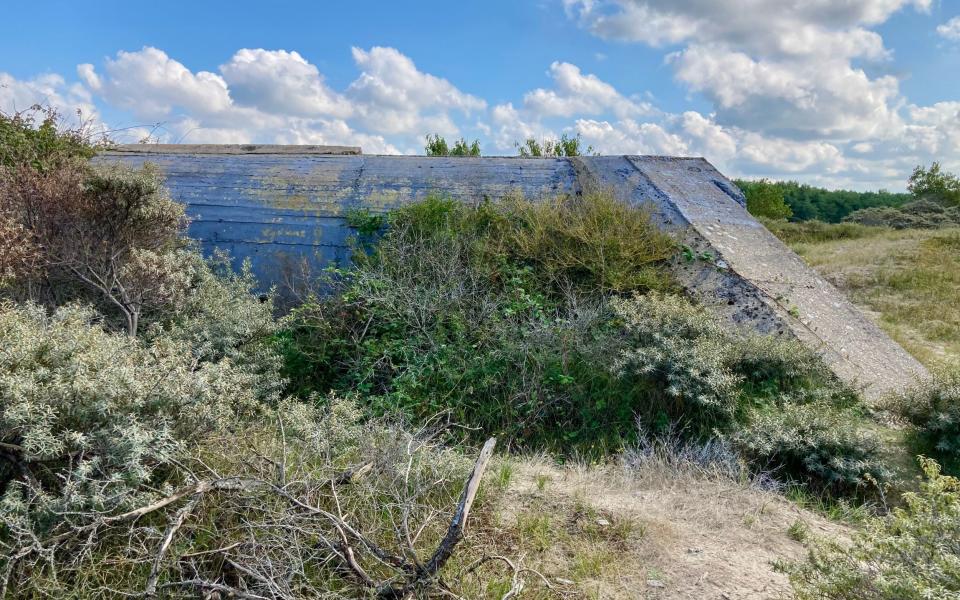
German bunkers still visible today in Le Touquet
For all that this is happening in the early summer of 2024, the busy propellers of these vintage planes do not feel that far removed from the events which played out here exactly 80 years ago this week, as the D-Day landings changed the course of the Second World War.
Not “here” precisely, of course. At least, not without caveats. The main spear thrusts of Operations Neptune and Overlord pierced the enemy flank – as history knows well – some 200 miles to the south-west, along the arc of the Normandy seafront. Together, Allied and German forces sustained an estimated 15,000 fatalities that morning; young men’s lives evaporating in sand and blood. But away to the north, in the Pas-de-Calais – near that narrowest point of the English Channel, across which Hitler might reasonably have expected the fight-back to begin – Le Touquet was another casualty of June 6, 1944.
True, the planes which bore down upon it were not Spitfires and Mustangs, but, for the most part, the heavy Lancaster bombers of No 218 Squadron of the RAF. That first week of June was an elaborate game of smoke and mirrors, with the Allies launching a variety of diversionary “attacks” – Operation Titanic, Operation Taxable, Operation Big Drum – to distract the enemy from the very real plans for Ouistreham and Arromanches. But amid the subtle radar jamming and false fleets conjured by small boats and reflector balloons, Operation Glimmer delivered a harder punch. Between June 2-6, some 2,000 bombs were dropped on Le Touquet. The chic playground of the Canche estuary, a place that had been a beloved destination for the British elite, became their sacrificial lamb.
The early history of Le Touquet has been written repeatedly; a rosy daydream in the Gallic sun. It began with Parisian lawyer Alphonse Daloz, who imagined a resort of style and refinement, ideal for well-to-do visitors from the French capital – and purchased a plot of land near the Canche in 1882. It was expanded and finessed by John Whitley, a British businessman, who bought Daloz’s holding in 1902, and widened its aims to include wealthy tourists from the far side of the Channel.
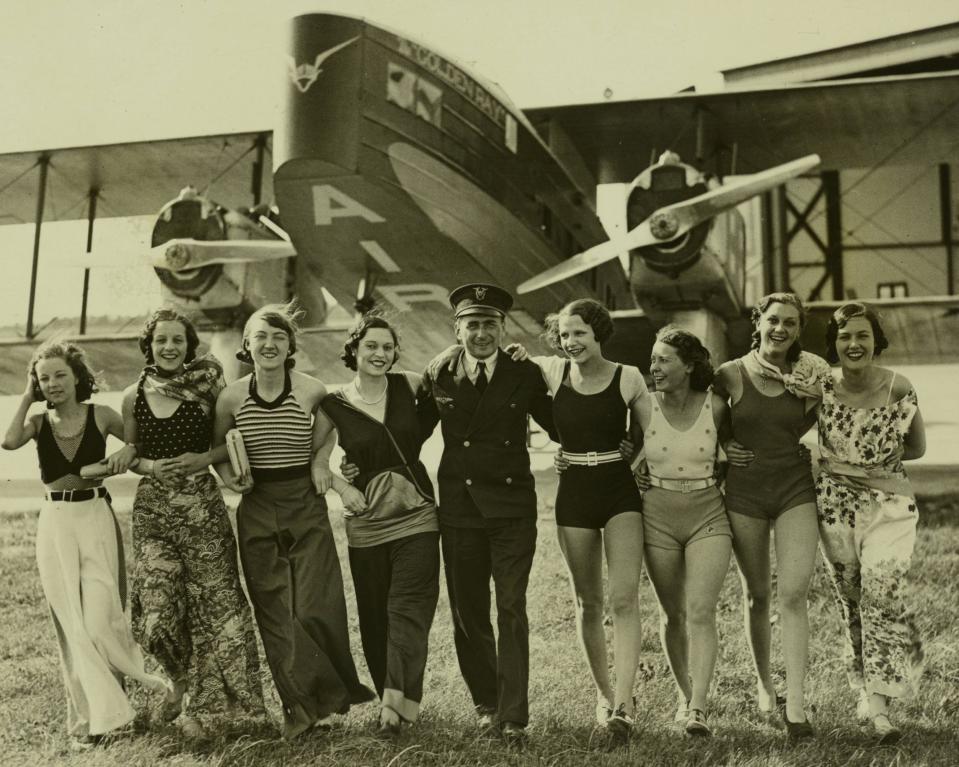
A party of London chorus girls leave for Le Touquet on the new Air Union summer service established to bring over tourists (1936) - Hulton Archive
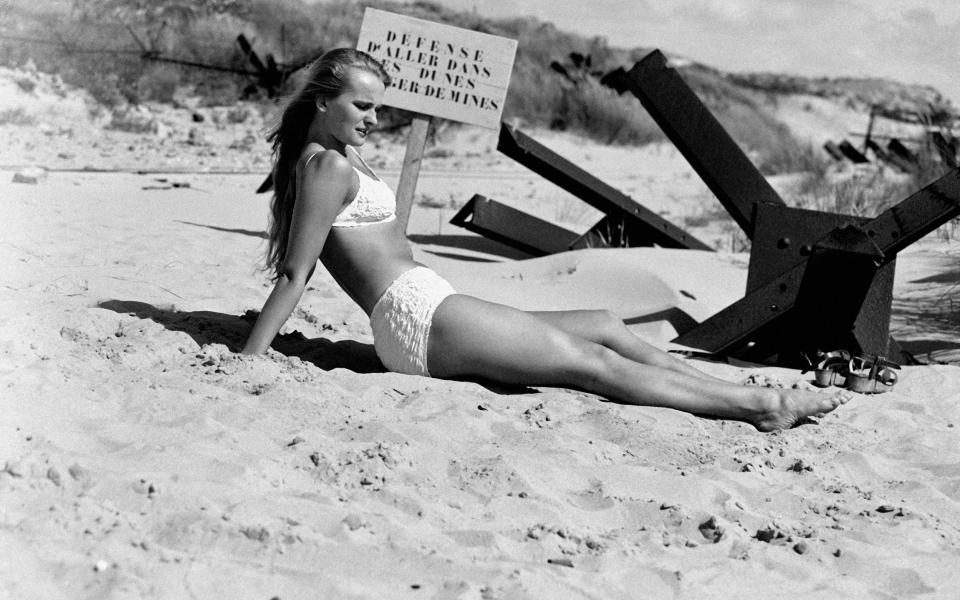
Le Touquet quickly became a popular bathing spot in the mid-20th century - Keystone-France
His scheme worked. To the first hotels and attractions which opened their doors while Victoria was still alive – the Hôtel Saint-Georges (1884), Le Grand Hôtel (1887), Casino de la Plage (1897) – were added a swathe of bijou properties in the radiance of the “Belle Époque”. The Atlantic Hôtel arrived in 1904, the Golf Hôtel in 1908, the Casino de la Forêt in 1913. And while the First World War turned these pleasure palaces into hospitals and refugee centres, the Roaring Twenties only regilded the lily. By the time the Hôtel Le Westminster and the Hôtel Royal Picardy had stepped onto the floor, Le Touquet was a leisure hotspot of few equals.
Yet if this halcyon era glows brightly in the popular perception of the town, what happened to Le Touquet in that summer of 1944 is rather more hidden in ashes and fire.
The Second World War engulfed the town quickly. The first German officers arrived on May 21 1940, 11 days after the assault on France had commenced. That June, 40,000 Wehrmacht troops were camped by the shore, preparing for an invasion of Britain that would never take place. The plan for Operation Sealion abandoned, Le Touquet settled into occupation, the Atlantic Wall rising along the beaches where affluent holidaymakers had strolled. Liberation would take four years. When it finally arrived, it came at a price.
I meet Lucas Roseuw outside the tourist information office. Armed with a folder of photographs and notes, as well as a bicycle, he is waiting to take me on a tour of the relevant sites. We pedal away slowly, partly because such is the pace of life in this endlessly pretty place, partly because it is not very far to our first stop – the cluster of apartments and shops at the bottom of Avenue du Verger, collectively described as the “Hotel de l’Hermitage”.
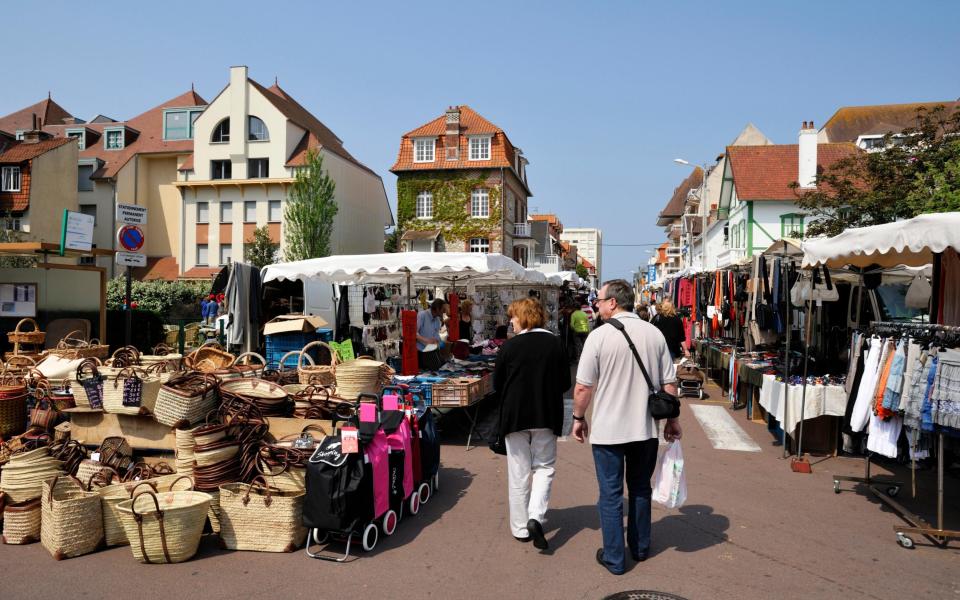
Residents stroll around Le Touquet on market day - Alamy
They bear only partial resemblance to the genteel property that opened here in 1904 – partially because the hotel was bombed on the night of June 2-3 (it was converted into an apartment building in 1968). Lucas shows me a faded image of Erwin Rommel paying it a visit in 1940, then turns the page to take in the lovely lawn which spreads out on the other side of the road, in front of what is now the Casino Barrière. Except that, in his book, it is 1927, and the Art Deco marvel that was the Grand Restaurant de La Forêt is agleam on what is now just grass. “It was pulverised,” he says.
However, the greatest gap is across the roundabout, at the top of Avenue du Château. Not that there is a gap in the literal sense. This wide wedge of land is now occupied by the Lycée Hôtelier du Touquet, the vast hospitality training school that has stood here since 1971. Rewind to 1929, though, and this was the Hotel Rôyal Picardy, Le Touquet’s pre-war crown jewel – a sumptuous confection of 500 rooms, 120 lounges, 50 apartments, a spa, a swimming pool and a garage with space for 100 cars. Described by contemporaries as the “biggest, most luxurious hotel in the world”, it swaggered onto the stage just a few weeks before the Wall Street crash dropped the curtain on the Roaring Twenties – and finished the summer of 1944 as a ruin. A small information board mourns it, in front of the Lycée, even as would-be waiters and sous-chefs head inside for lessons.
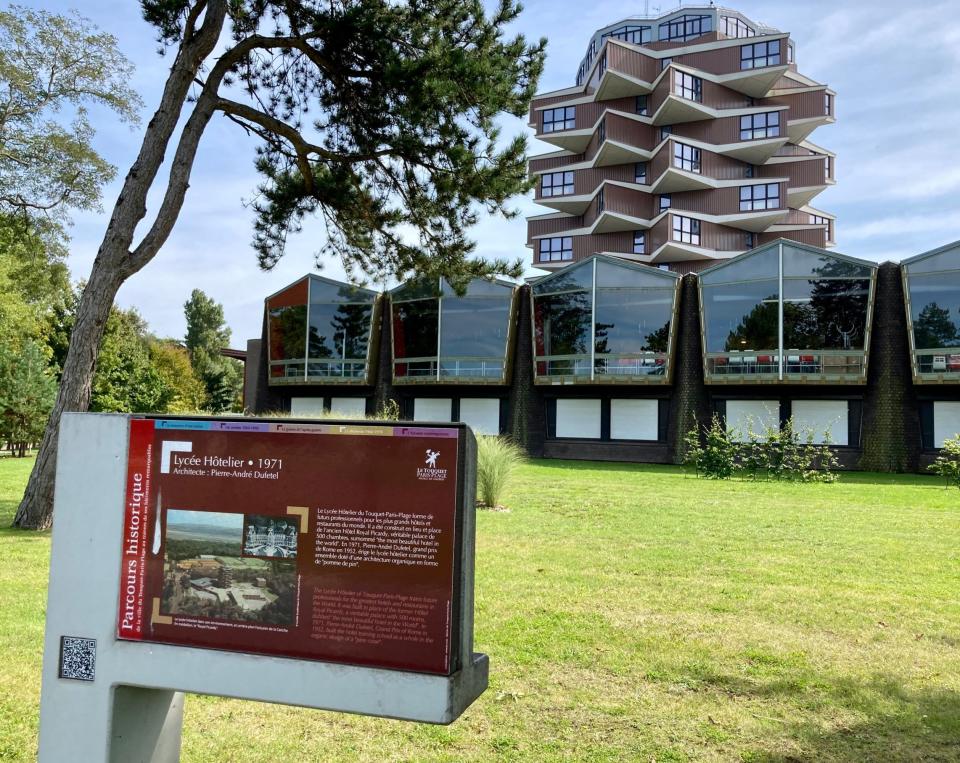
The former site of the Hotel Picardy, now the Lycée Hôtelier du Touquet
It would be inaccurate to say that every ghost on the grid is the result of Allied bombs. When Lucas and I cycle south down the seafront, we pause, finally, at 181-183 Boulevard du Dr Jules Pouget (named after the town’s wartime mayor, who was imprisoned by the Gestapo). There is little to see here; just another set of unremarkable flats, gazing at the waves. But, 81 years ago, this was the Atlantic Hôtel, one of Le Touquet’s original accommodation miracles. When the war broke out, it was doomed. Too big, too famous, too well known by both the British guests who had stayed there and the RAF pilots who could see it from the air, it was torn down by the occupiers in 1943; a visible landmark expunged. Some of its masonry went into the bunkers which still skulk on the coast path.
These scars are everywhere; plenty of them all but invisible. Le Touquet’s pair of 19th-century lighthouses, constructed in 1852, were destroyed by the retreating Germans as they fled town in September 1944. Happily, the glorious Hôtel de Ville is still there on Boulevard Daloz; a neo-Gothic masterpiece, completed in 1931, which was funded by a single year’s taxation (1928) on the casinos. It was still there after the war, too, its belfry used as a makeshift lighthouse for seven years. It is currently undergoing a renovation (due to be finished in 2026) – taking its cue from its neighbour, the church of Sainte Jeanne d’Arc, which fell under heavy bombardment in 1944, but has regained full health.
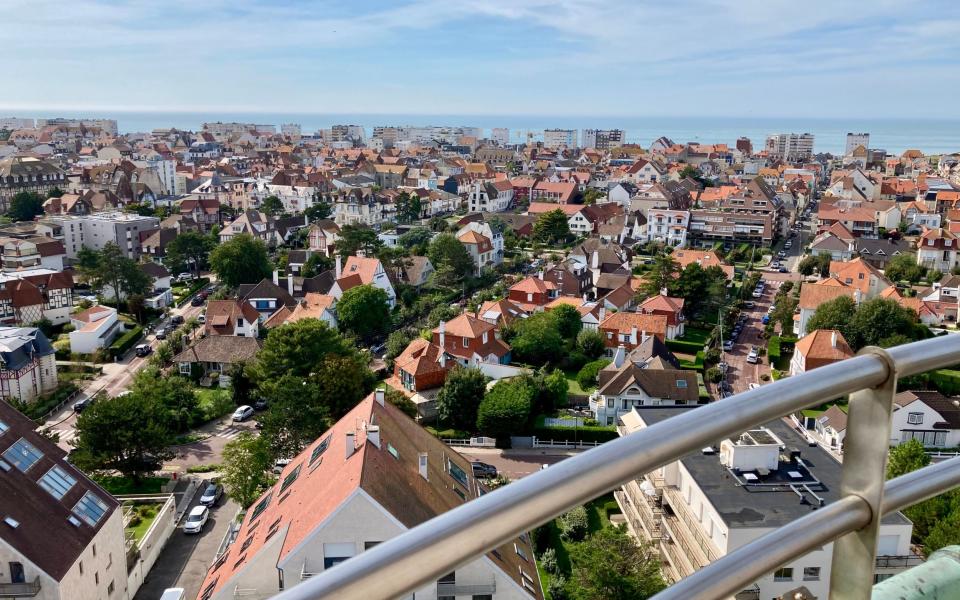
The view from Le Touquet's lighthouse, now being renovated
But then, Le Touquet has a reputation for carrying on regardless. Its guests’ plump bank accounts kept its hotels going during the Thirties, even as the Great Depression sapped appetites for tourism elsewhere. And it bounced back from war with splendid speed, its beach reopening as early as June 1945. Eight decades on, it still serves up an occasional dirty secret – as recently as 2017 and 2022, its soft sands revealed undetonated mines. In each case, the situation was defused safely and successfully, but with an explosive punch.
Then there is the greatest survivor. With – perhaps – the exception of the Royal Picardy, Le Westminster was the most extravagant of those Roaring Twenties debutantes; a star that was born in 1924. Its status as the effective last gentleman standing has not altered this now that it has reached its centenary; its red-brick façade and curving driveway give the top end of Avenue du Verger an extra elegance – just as they did 100 years ago. And its main restaurant, Le Pavillon, helmed by chef William Elliott, wears the accessory that is all but obligatory for a serious dining room in a high-end French hotel; a Michelin star.
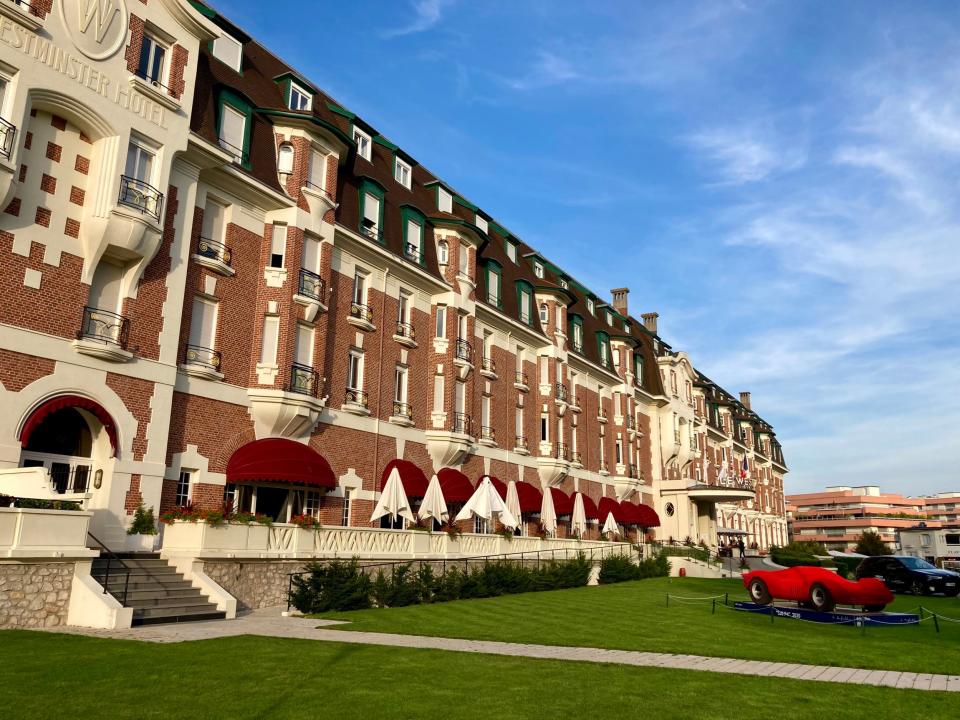
Hotel Le Westminster was one of the only grand buildings in Le Touquet which survived the D-Day assault
But it is the weight of the past, near-tangible along its plush-carpeted corridors, which feels most compelling. Not least the corridor which leads off the reception area, its walls lined with photos of former guests. Charles de Gaulle is here, having stayed at the hotel in 1959; Edith Piaf gazes out from the sepia mists of 1958. Marlene Dietrich lingers in a world on a precipice, the date of her checking in recorded as July 11, 1938. Sean Connery is captured in 1962, in a posed studio embrace with Ursula Andress – appropriate, as, according to legend, he signed the contract to star in Dr No on the Westminster hotel bar.
By the time James Bond was striding across cinema screens, Le Touquet was back to its sophisticated normality. Even in its more rudimentary workings. The replacement lighthouse which juts into the sky directly behind the Westminster was switched on in 1951. Open to visitors, it has a small gallery of its own. One especially pertinent photo shows the view from the lantern in 1910, the Atlantic Hotel unmistakable in its position on the shore. It is notable by its absence when I climb the 274 steps to admire the 2024 version of the panorama – but everything else about the town seems to shine all the same.
Getting there
Lille is the nearest major railway station to Le Touquet, a 75-mile drive away. Return trains from London St Pancras start at £103, via Eurostar (0343 218 6186; eurostar.com)
Staying there
Double rooms at Le Westminster (0033 3 2105 4848; hotelsbarriere.com) start at €235
Further information
letouquet.com; hautsdefrancetourism.com; france.fr
